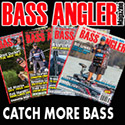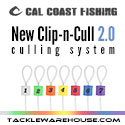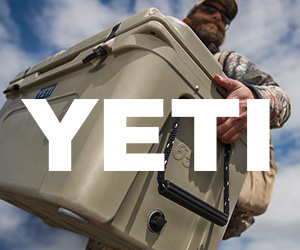|
Reel
Maintenance & Rebuild |
 Daiwa Sol - Mini-Lube and
Inspection (Also applies to Daiwa Alphas reels Ė all variations) (continued)
Daiwa Sol - Mini-Lube and
Inspection (Also applies to Daiwa Alphas reels Ė all variations) (continued)
 The
level line worm shaft is held into the frame with a spring clip (retainer),
washer, and holder (Parts 32-34). It will be necessary to remove the clip
retainer, so the washer and holder can be removed. I like to use a 1/8 inch
wide flat screwdriver to remove the retainer Ė carefully working the screwdriver
tip between the end of the worm shaft and cutouts on the retainer. [I give the
screwdriver tip a twisting motion to do this.] Just be careful not to distort
the retainer, or damage the groove the retainer locks into or the worm shaft
itself. I also suggest keeping part of a finger or thumb on the retainer, since
it can fly off as it is being removed and get lost. Once the retainer is
removed, you can remove the washer and holder located beneath it.
The
level line worm shaft is held into the frame with a spring clip (retainer),
washer, and holder (Parts 32-34). It will be necessary to remove the clip
retainer, so the washer and holder can be removed. I like to use a 1/8 inch
wide flat screwdriver to remove the retainer Ė carefully working the screwdriver
tip between the end of the worm shaft and cutouts on the retainer. [I give the
screwdriver tip a twisting motion to do this.] Just be careful not to distort
the retainer, or damage the groove the retainer locks into or the worm shaft
itself. I also suggest keeping part of a finger or thumb on the retainer, since
it can fly off as it is being removed and get lost. Once the retainer is
removed, you can remove the washer and holder located beneath it.

The worm is now ready to
be slid part of the way out of the frame, so you can lift the anti-reverse
ratchet (A/R Ratchet). Rotate the level wind gear on the end of the worm, so
the level wind worm can be unscrewed and partially slid out of the frame. Once
it is slid out, you can lift the anti-reverse ratchet, and gain access so the
lower shaft bearing and the frame can be lubed.


The picture shows the
locations which usually contain grease. However, not all locations may need
additional grease, depending on the condition of your reel. In addition, some
of the grease may be contaminated with debris or could have hardened, so it may
need to be removed before applying new grease. [You will have to use your own
judgment in these cases. Just remember, excess grease can splatter or run into
areas that normally donít get greased (e.g. drag), so donít get carried away
with the grease!]
Notice that some of the
frame components have holes in them (clutch cam plate (Part 47) and drive shaft
retainer (Part 70)). These holes are purposely designed for adding grease,
since they provide access to friction areas beneath them. Just put a small dab
of grease in the hole (if needed).
You can remove old or
contaminated grease a number of ways. Most use a brush, rag, and/or a hard wood
stick to remove grease. I do not recommend using q-tips or rag that will leave
fibers, filaments or threads behind. The grease in my Sol was in good shape, so
I only needed to add a few dabs in a couple of locations.


Reassembly begins with
sliding the anti-reverse ratchet (and the composite spacer washer (Part 75) back
to the bottom of the drive shaft, so the level wind worm can be reattached to
the other side of the frame. Once the ratchet is on the bottom of the shaft,
the worm drive gear can be turned to return the worm completely back into the
frame.
The worm shaft holder,
washer and retainer can now be installed to lock the worm back in place.
Exercise caution when reinstalling the retainer, so you donít damage the groove
the retainer locks into. Iíve found that it is easier to re-clip the retainer
by lining up/starting the front edges into the groove, and then using a pliers
to carefully squeeze the opposite side of the retainer onto the together. Just
be careful if you do this, so you donít get the retainer at an angle which will
damage the soft metal lock groove or the face of the washer beneath it! [I have
also pushed the retainer back on with the blade of a flat screwdriver, but there
is much more of a chance for the retainer to snap off and be lost if you arenít
careful.]
The anti-reverse ratchet
on low profile Daiwa reels rides on the outside of a machined edge on the bottom
of the drive shaft. If it is not positioned all the way down on this collar,
the reel will not operate correctly Ė it will crank hard because the drive and
pinion gears do not mesh correctly, and the drag will have very little
adjustment range because the drive shaft length has been reduced. [So, keep
this in mind until the handle side plate is reinstalled on the reel.] The
ratchet can easily come out of the edge on the drive shaft if the reel is tilted
during disassembly, and you wonít even know it. Iíve marked the picture with a
green arrow showing the correct mating of the ratchet and spacer washer to the
drive shaft. Here is the best tip that I can
give you in this entire tutorial: Put a dab of grease on the ratchet and the
spacer washer to help keep them in place. The adhesion provided by the grease
will help keep the ratchet and washer mated during assembly.

Put a dab of grease on the
top of level wind gear (near itís tabs), and then put it on the bottom of the
drive gear, aligning its tabs with the holes in the bottom of the drive gear.
Note that this is another place where you can have a problem if you are not
careful, since the tabs can come out of the drive gear during reassembly, and
the two gears will not be mated correctly. If this happens, you will have a
difficult time installing the handle side plate later, since it will not fit up
tightly against the frame Ė so also keep this in mind if you have problem
getting the side plate and frame together.
The level wind drive gear
and drive gear can be installed on the drive shaft together, but look beneath
the drive gear to insure both are still adhered together, and are resting on top
of the spacer washer and anti-reverse ratchet beneath them.


The drag stack can be
installed as shown in the schematic, but here are a few tips. When installing
the eared washers, be sure to get them completely aligned in the key slots that
have been machined in the drive gear, and make sure the bottom one is fitted all
the way down into the bottom of the drive gear before stacking the others. Do
not allow grease or oil to contact the washers and discs as you assemble the
stack. It is a good practice to recheck that the eared washers are riding
correctly in the drive gear slots, just prior to installing the cover plate,
since they can easily work their way out.
The pinion gear can be
placed in the yoke, and both can be put over the yoke posts, so the pinion rests
in its bearing. Install the springs on each post over the yoke, and put a dab
of grease in the 3 locations shown in the picture.

I like to
install the gear shaft collar on the drive shaft at this time, because some
Daiwa low profile reels utilize keys on the collar to mate with the top drag
washer, and it is too difficult to mate them later. In addition, any excess
grease that is pushed out of the shaft roller bearing as the side plate is
installed will not end up in the drag stack.

Put a small dab of grease
on the face of the side plate pinion gear bearing (Part 58) and on the inside of
the drive shaft roller bearing (Part 83) as shown in the picture (if required).
Try to keep excess grease from getting into opening where pinion gear fits into
its bearing, because it could foul the operation of spool tension adjustment.
Be sure to reinsert the plate that keeps the clutch cam spring in position
(location circled in the picture), if it came out. [Some Daiwa reels hold this
plate on with an adhesive, and others only use silicone grease, so the plate may
or may not come out.]
Check the position of the
anti-reverse ratchet, the washer right above it (Part 74), the drive gear and
the drag stack for correct mating, one last time.

Position the handle plate
cover over the drive shaft and pinion gear, so they align up with their
respective bearing. Lower the plate cover down over the shaft and pinion until
the base of the plate is touching the edge of the frame. [A slight amount of
pressure will tend to keep the two pieces separated, due to the cam springs, but
this will be very small.] It should take very little effort to get the two
pieces to completely mate, so if it takes much force, something may not right Ė
do not force it! [Excessive force can damage the eared washers, side plate, and
other components, so investigate the cause for the problem.] Install the plate
screws and tighten them up only after ensuring there is no problem. Be careful
not to mar or scratch the plate when reinstalling screws.

Put a very light coat of
reel oil on the pinion shaft, and insert it through the spool adjustment collar
into the pinion gear. Install the spool adjustment cap on the collar, but just
start it on a few threads threads, since if you tighten too much, the pinion
will interfere with reinstallation of the spool (and palm plate).

Install the outer shaft
bearing and ensure it is firmly fitted into its mount Ė the mount may be a
little tight on a new reel. Install the thin shaft bearing washer on top of the
bearing.

Install the drag spring
washers, so they are cupped inward and opposite of each other (see picture). If
the washers are cupped on top of each other, drag adjustment will only work thru
a very small range, and the shaft will play excessively (excessive inward and
outward slop/movement of the shaft). Excessive shaft play can result in the
gears not meshing correctly and chattering, especially under light drag settings
Ė which can damage drive components. (On some Pixies and the Alphas ito, the
anti-reverse ratchet can even come off of itís machined edge on the bottom of
the drive shaft, or the level wind gear tabs can come out of the bottom of the
drive gear, if the reel is engaged in this condition Ė and you wonít know it
even happened until later. So donít engage the reel until there is sufficient
drag tension on the drive shaft, and install the drag spring washers correctly.)
Put a small dab of grease
between the two drag spring washers and on top of the top washer as shown in the
picture.

Carefully thread the drag
star onto the drive shaft, being careful not to cross-thread and damage the fine
tapered threads. [Remember it will thread the direction than you crank.) The
star should spin freely after it is initially started, and will only tighten
once the drag spring washers start to compress. Continue to tighten the drag
star until the edge of the shaft where the handle cup washer (spacing sleeve,
(Part 89)) clears the top of the drag star, and then continue for at least
another full turn. If you tighten the handle down with its cup washer resting
on drag star and not the edge on the drive shaft, you can damage the threads
inside the drag star. Install the handle cup washer over the drive shaft.


Place the handle over the
top of the handle cup washer, install and tighten the handle nut so it aligns
with the hole for the handle screw, and then tighten the handle screw. Do not
over tighten the nut, since you can damage the washer beneath it. Be careful
not to strip the screw.
Insert the spool into the
frame and lineup the shaft so the clutch bearing inserts into its mount. If the
spool wonít go in all the way, first try pressing the release bar to disengage
the spool. If that doesnít work, the spool tension setting is probably set too
high, which is preventing the bearing from seating fully Ė so back off the
spool tension adjustment a little more.
Once the spool is fully
inserted, line up the palm plate so the spool shaft starts into the spool
bearing and lock tabs, and rotate the palm plate to engage the tabs. Tighten
the screw in the center of the magnet brake adjustment knob, to lock down the
plate.






































